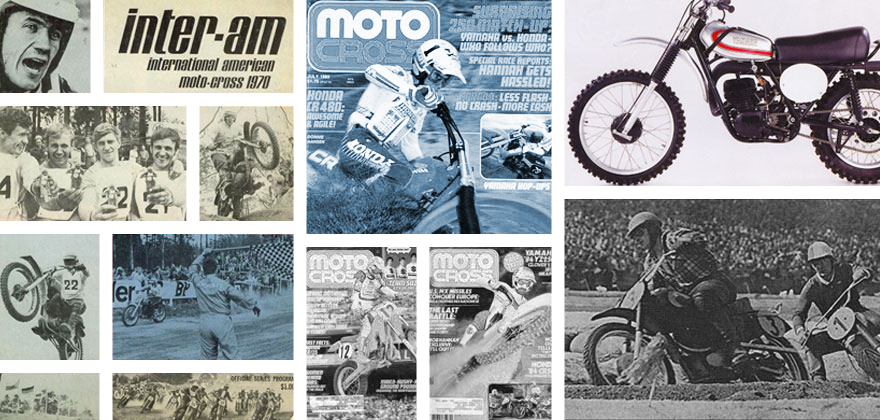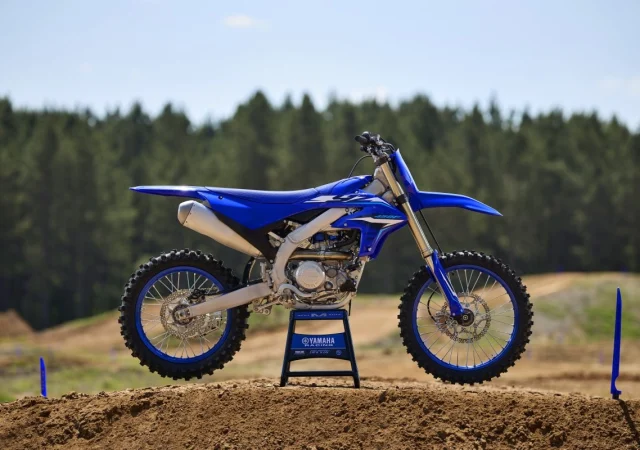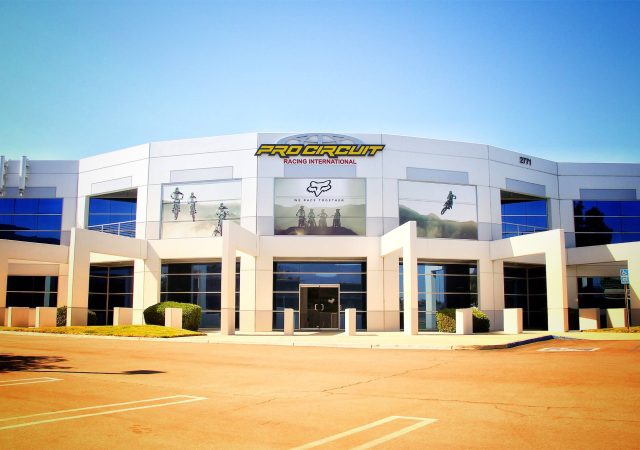
For this edition of Classic Ink, we are going to take a look back at some ads and promotional material for Honda’s all-new 1992 CR250R.
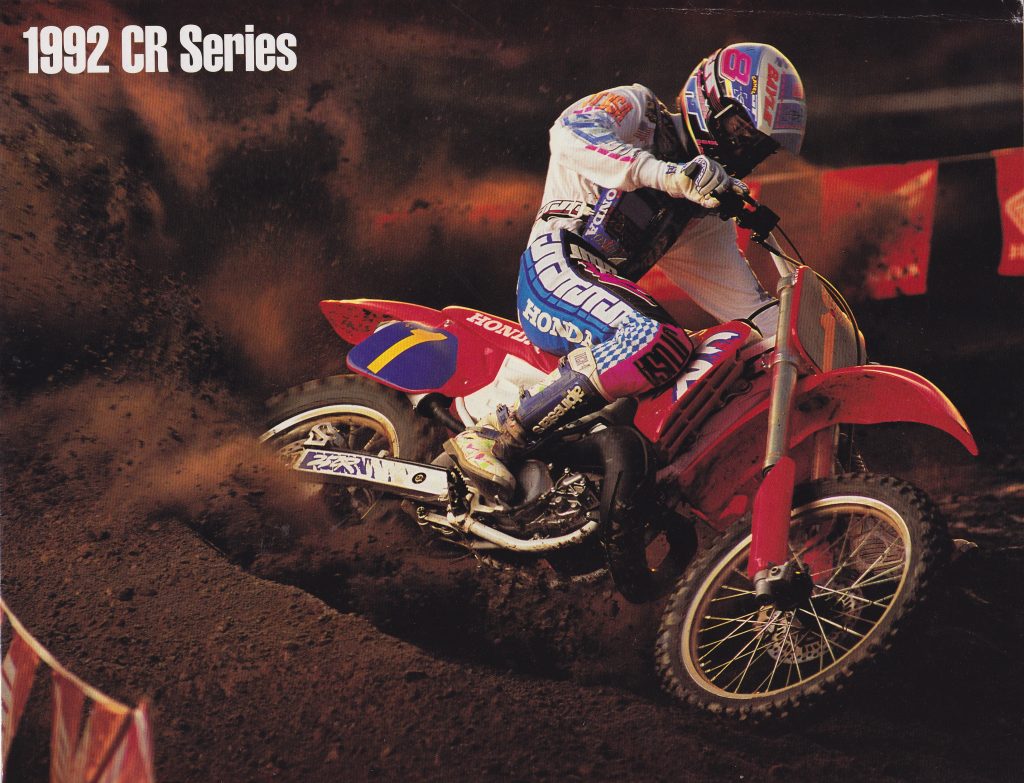 In 1991, Honda’s Jean-Michel Bayle made history by becoming the only rider to capture all three major US championships in the same season. Gracing the cover of the 1992 Honda CR brochure, Bayle’s success on the track never translated to equal amounts of adoration in the minds of many US fans. Bayle’s perceived aloofness and French heritage made him a tough sell to a generation of American fans drunk on 1980s Rambo-style patriotism. While his skill on the motorcycle was unquestioned, his effectiveness as a marketing tool for American Honda and his many sponsors was far more dubious. After a tumultuous three seasons at American Honda, Bayle would leave the motocross world entirely to chase new challenges on pavement in 1993.
In 1991, Honda’s Jean-Michel Bayle made history by becoming the only rider to capture all three major US championships in the same season. Gracing the cover of the 1992 Honda CR brochure, Bayle’s success on the track never translated to equal amounts of adoration in the minds of many US fans. Bayle’s perceived aloofness and French heritage made him a tough sell to a generation of American fans drunk on 1980s Rambo-style patriotism. While his skill on the motorcycle was unquestioned, his effectiveness as a marketing tool for American Honda and his many sponsors was far more dubious. After a tumultuous three seasons at American Honda, Bayle would leave the motocross world entirely to chase new challenges on pavement in 1993.
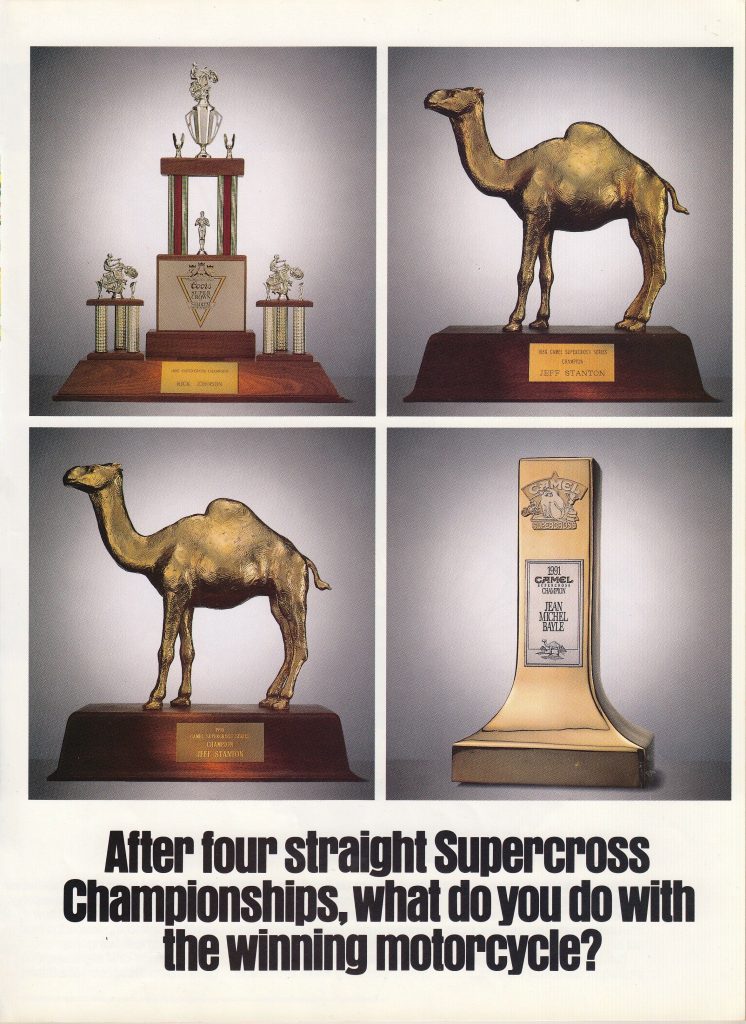 From 1988 through 1996, American Honda was an absolute juggernaut in Supercross. Ricky Johnson, Jeff Stanton, Jean-Michel Bayle, and Jeremy McGrath captured every 250 Supercross title during this nearly decade-long run. In 1992, that winning streak was almost toppled by Yamaha’s brash young star Damon Bradshaw, but the LA riots, a Red Bud crash, and an epic meltdown at the final round would eventually open the door for 2-time SX champ Jeff Stanton to capture his third and final Supercross title in one of the most dramatic comebacks the history of the sport.
From 1988 through 1996, American Honda was an absolute juggernaut in Supercross. Ricky Johnson, Jeff Stanton, Jean-Michel Bayle, and Jeremy McGrath captured every 250 Supercross title during this nearly decade-long run. In 1992, that winning streak was almost toppled by Yamaha’s brash young star Damon Bradshaw, but the LA riots, a Red Bud crash, and an epic meltdown at the final round would eventually open the door for 2-time SX champ Jeff Stanton to capture his third and final Supercross title in one of the most dramatic comebacks the history of the sport.
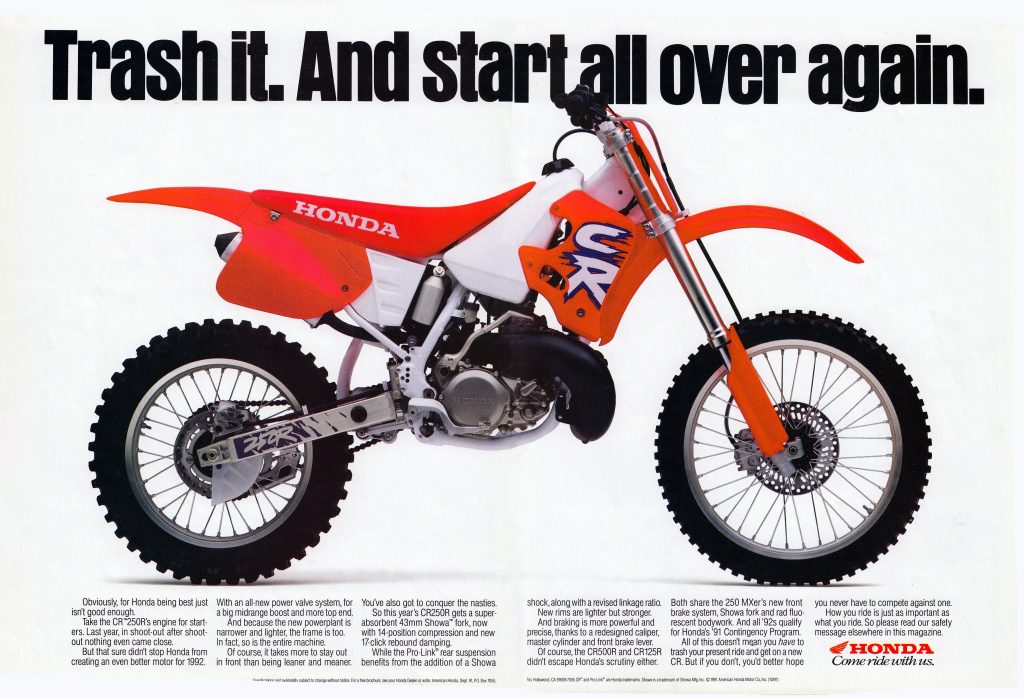 All-new from the ground up, the 1992 CR250R was a complete redesign of one of the most successful machines in motocross.
All-new from the ground up, the 1992 CR250R was a complete redesign of one of the most successful machines in motocross.
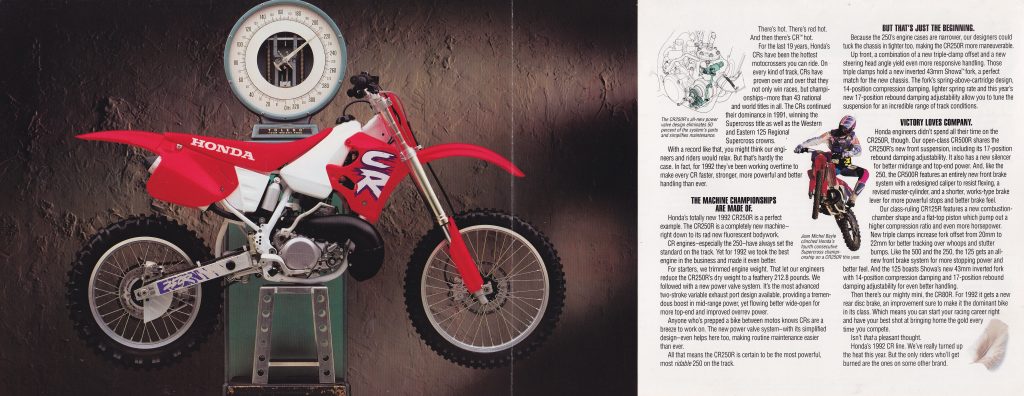 Lighter, sharper, slimmer, and trimmer, the 1992 CR250R was significantly more aggressive than the machine it replaced. The revamped CR replaced the electric-smooth motor of the 1991 design with a rompin’, stompin’ rocket of an engine that hit hard and pulled to the moon. The suspension remained a weak point, but the new CR was an epic platform from which to win races.
Lighter, sharper, slimmer, and trimmer, the 1992 CR250R was significantly more aggressive than the machine it replaced. The revamped CR replaced the electric-smooth motor of the 1991 design with a rompin’, stompin’ rocket of an engine that hit hard and pulled to the moon. The suspension remained a weak point, but the new CR was an epic platform from which to win races.
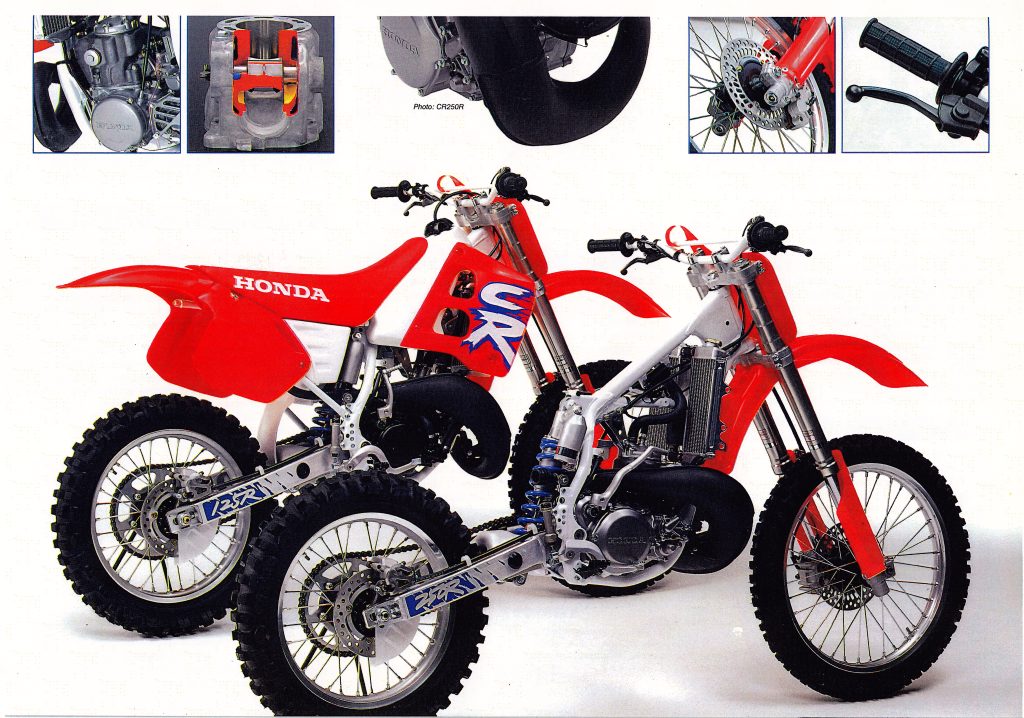 The CR250R’s all-new chassis was an absolute scalpel, but hard-ridden machines quickly showed cracks in several high-stress areas. Additional bracing and gusseting of the frame and swingarm were advisable if you were going to push the all-new machine to its limits.
The CR250R’s all-new chassis was an absolute scalpel, but hard-ridden machines quickly showed cracks in several high-stress areas. Additional bracing and gusseting of the frame and swingarm were advisable if you were going to push the all-new machine to its limits.
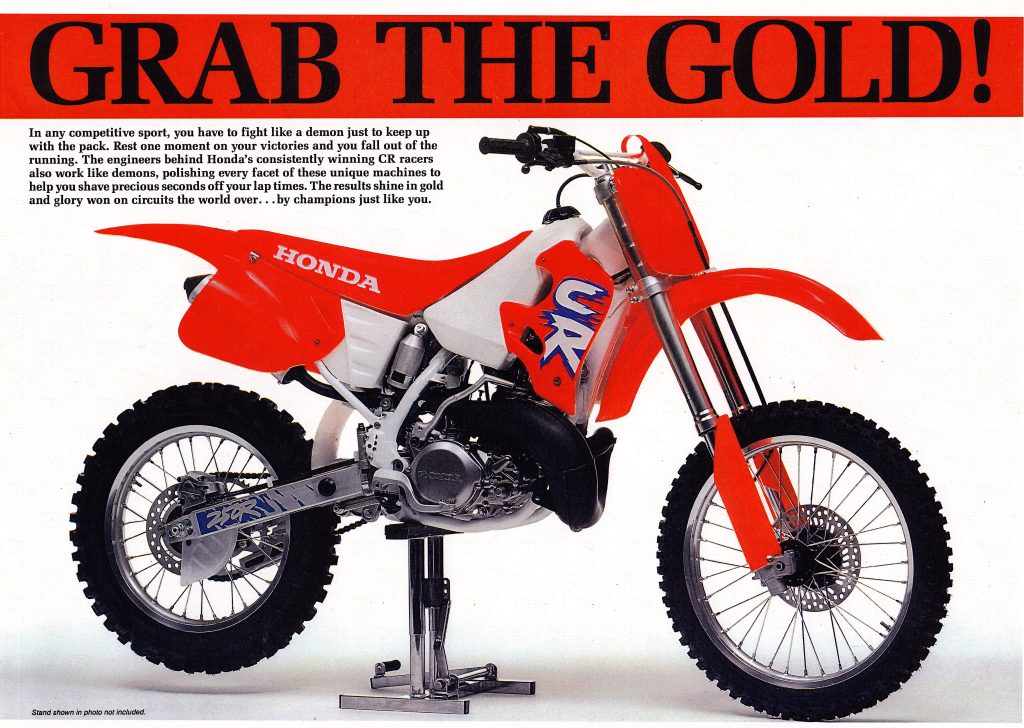 In 1992, the all-new CR’s radically revamped aesthetics were quite a polarizing change. Many riders did not initially care for the machine’s new color scheme and kindergarten-level graphics, but most eventually warmed to the bolder direction of Honda’s styling department.
In 1992, the all-new CR’s radically revamped aesthetics were quite a polarizing change. Many riders did not initially care for the machine’s new color scheme and kindergarten-level graphics, but most eventually warmed to the bolder direction of Honda’s styling department.
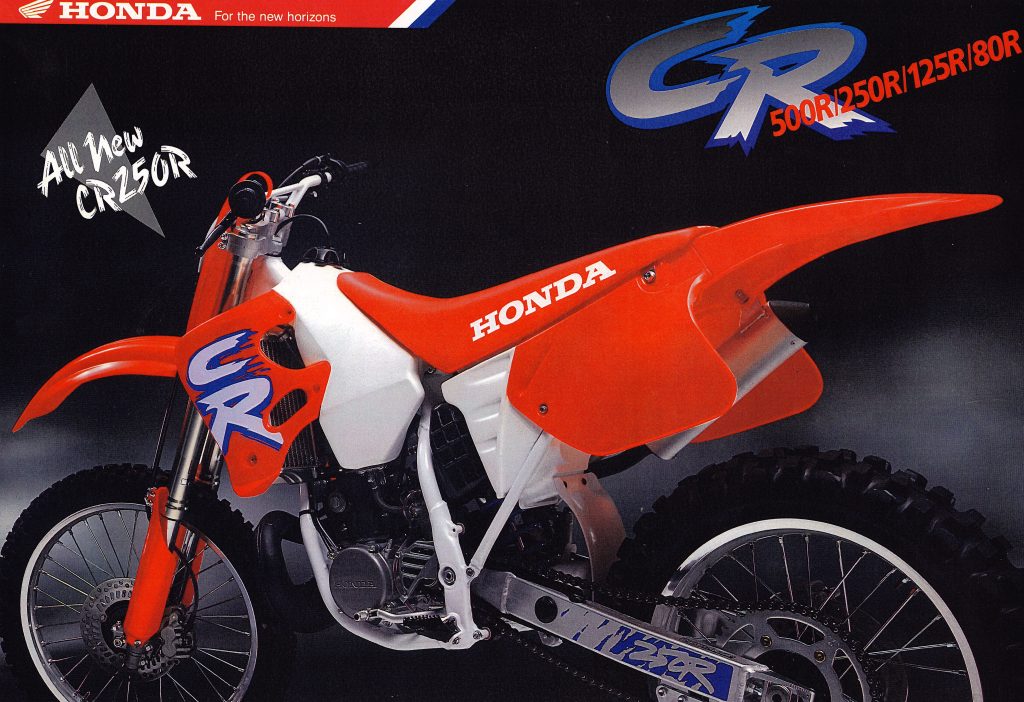 One interesting footnote to the 1992 CR’s radical redesign is its “one year” color. In photos, the new “Nuclear Red” plastic looks bright red and not all that different from the color of most other nineties CRs. In person, however, this unique 1992 shade was far more translucent and tinged with pink. In natural light, it glowed initially, but quickly started to fade to an odd salmon color if kissed too long by the sun. Riders were none too pleased by this fade to pink, and Honda reacted by reformulating the color over the next few seasons to keep the nuclear glow while ditching the fishy hue.
One interesting footnote to the 1992 CR’s radical redesign is its “one year” color. In photos, the new “Nuclear Red” plastic looks bright red and not all that different from the color of most other nineties CRs. In person, however, this unique 1992 shade was far more translucent and tinged with pink. In natural light, it glowed initially, but quickly started to fade to an odd salmon color if kissed too long by the sun. Riders were none too pleased by this fade to pink, and Honda reacted by reformulating the color over the next few seasons to keep the nuclear glow while ditching the fishy hue.

